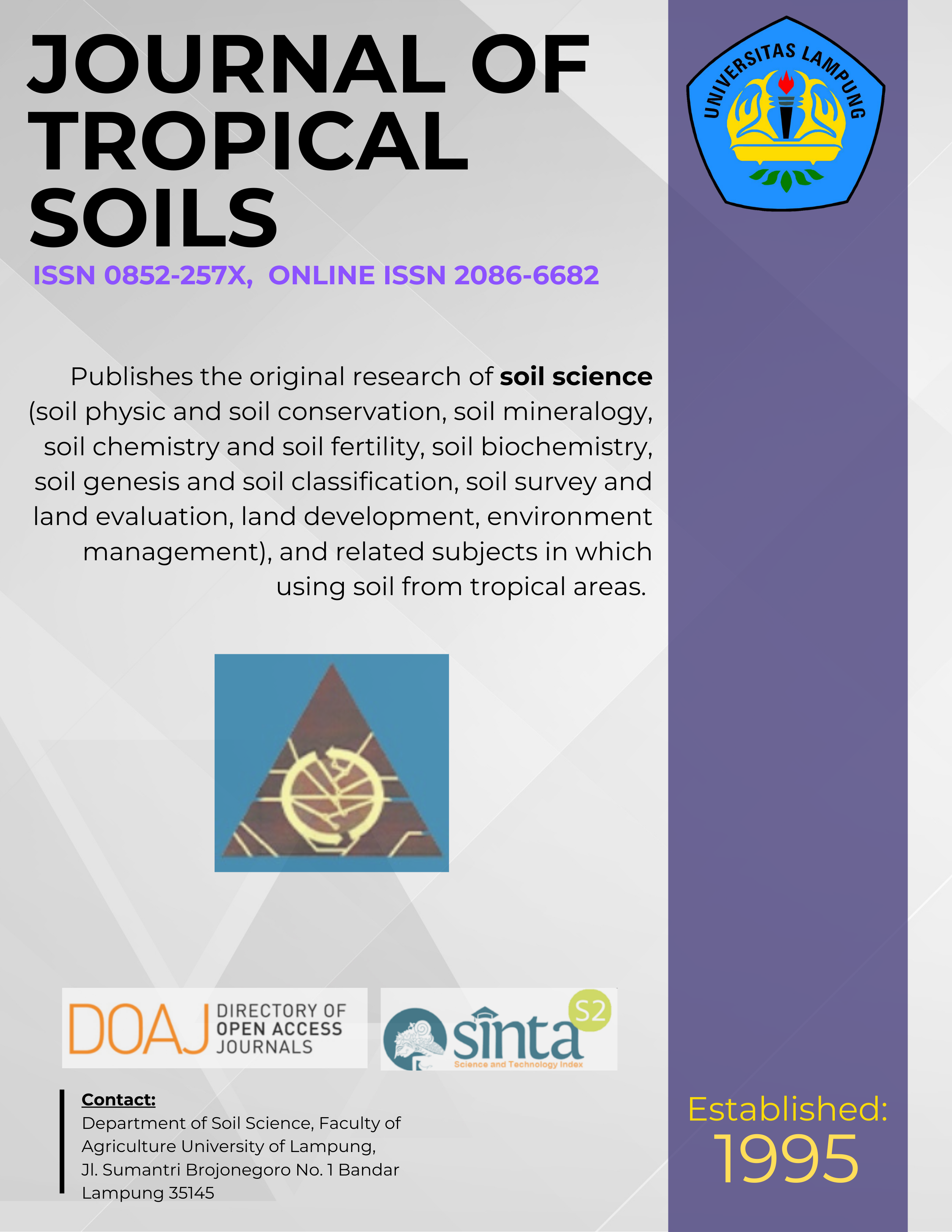N2O Emission from Managed Soil Under Different Crops in Rainfed Area, Central Java
Main Article Content
Abstract
N2O emission from agriculture has been assumed to increase by 30-35% until 2030. This gas has a major contribute to the emission from agriculture. N2O emission from managed soils is the 2nd contributor to green house gas (GHG) emission from agriculture in Indonesia. Rainfed area requested high management input. This research aimed to examine N2O emission from different crops in the rainfed area and its affecting factors, also to identify things that need to be considered in conducting N2O measurement from managed soil. Research conducted in Pati and Blora District, Central Java Province. Four (4) different experimental sites with 4 different crops were chosen. Those were mung bean, rubber plantation and sugarcane which located within Pati District, and maize crop which located in Blora District. No treatment was applied. Gas samples were taken following the day after fertilizing. Daily N2O fluxes from managed soil in tropical land of Indonesia determine by several factors, which are: days after fertilizing, fertilizer type and dosage, previous land use, growth phase of crops, sampling point and soil characteristic. The peak time was mostly influenced by crop type. Maize has the highest N2O daily fluxes with the range of 311.9 - 9651.6 ugN2O m-2day-1 and rubber plantation has the lowest with the range of 16.1 - 2270.7 ugN2O m-2day-1. Measurement of N2O from managed soil to determine annual emissions should be done at all crop types, soil types, considering crops growth phase and also high sampling frequency to prevent an over or underestimation.
Downloads
Download data is not yet available.
Article Details
Issue
Section
Articles
License for Authors
Authors who publish with this journal agree to the following terms:
- Authors retain copyright and grant the journal right of first publication with the work simultaneously licensed under a Creative Commons Attribution License that allows others to share the work with an acknowledgement of the work's authorship and initial publication in this journal.
- Authors are able to enter into separate, additional contractual arrangements for the non-exclusive distribution of the journal's published version of the work (e.g., post it to an institutional repository or publish it in a book), with an acknowledgement of its initial publication in this journal.
- Authors are permitted and encouraged to post their work online (e.g., in institutional repositories or on their website) prior to and during the submission process, as it can lead to productive exchanges, as well as earlier and greater citation of published work (See The Effect of Open Access).
License for Regular Users
Other regular users who want to cite, distribute, remix, tweak, and build upon author’s works, even for commercial purposes, should acknowledge the work’s authorship and initial publication in this journal, licensed under a Creative Commons Attribution License.
How to Cite
N2O Emission from Managed Soil Under Different Crops in Rainfed Area, Central Java. (2017). JOURNAL OF TROPICAL SOILS, 21(2), 79-89. https://doi.org/10.5400/jts.2016.v21i2.79-89

